A perceptual study of weak forms in Chinese: the case of phonetic homophony
The paper investigates the way some Chinese weak forms in spontaneous speech are perceived when taken out of a wider context. These forms are the result of syllable initials and finals modifications as well as coalescence due to the drop of syllable constituents. The results of the previous acoustic study demonstrated that not only functional but notional words have weak forms. We hypothesized that a number of those forms appear to acoustically resemble other Chinese words or word groups giving way to potential homophony. To prove the hypothesis, a perceptual study was performed. The tokens presenting potential homophones were segmented from native female spontaneous speech of 6 subjects. Two groups of Chinese native speakers (20 males, 20 females) participated in the experiment performing a discrimination task. The obtained results prove the hypothesis as in both groups, only 16% of responses identified canonical syllables, whereas 84% of responses identified the homonyms. There was certain gender difference which, however, proved insignificant for three fourths of the responses – more male listeners preferred homophones to canonical words/word groups. As expected, the reliable preference for the homophone during the discrimination task was demonstrated in 64% of the responses classified as non-identification of the canonical word/word group. Chinese native speakers are aware of this homophony, which in some instances is further expressed in the change of hieroglyphs creating not just homophones but full homonyms that have to be considered in Chinese as L2 teaching and learning.
Figures
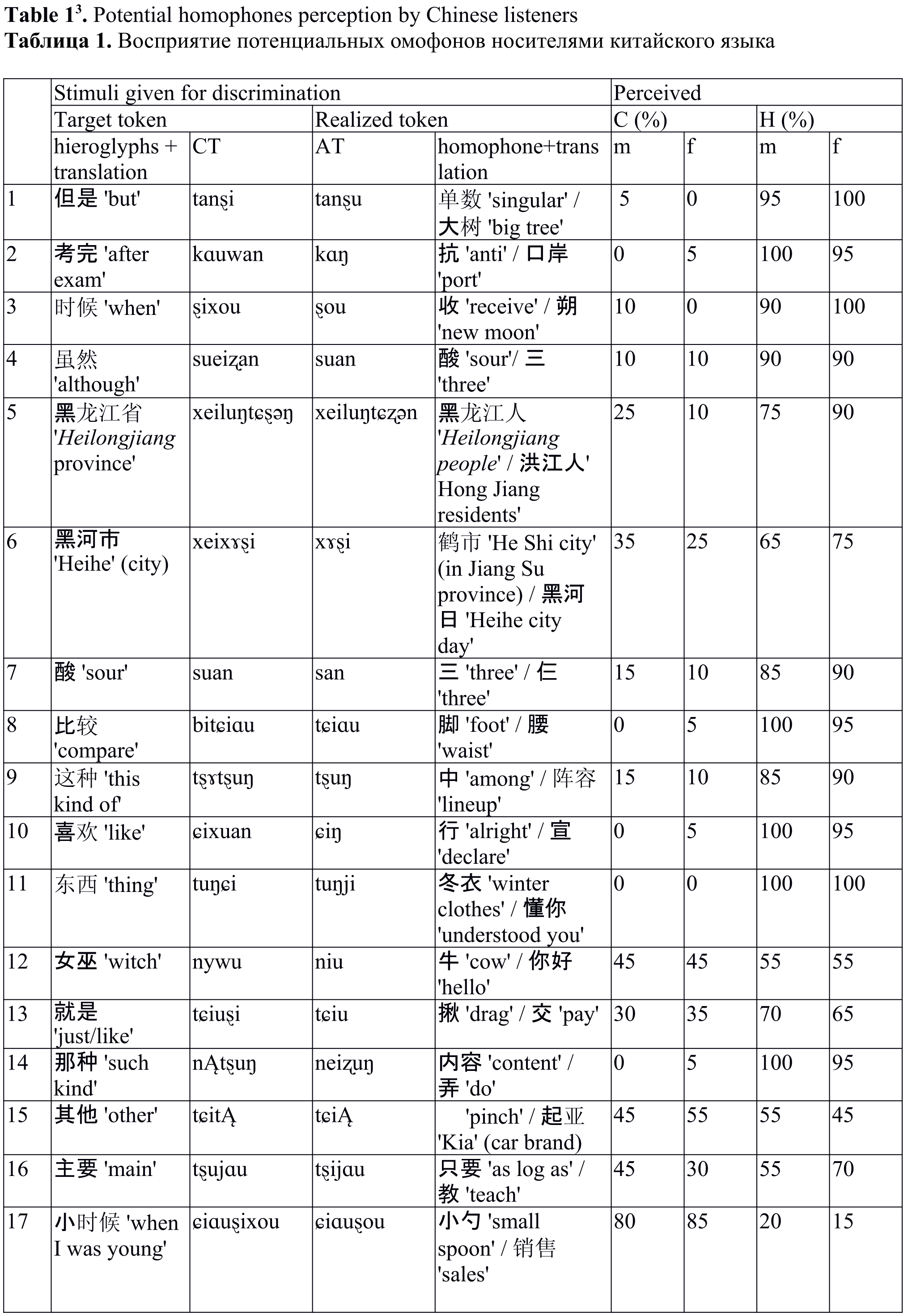
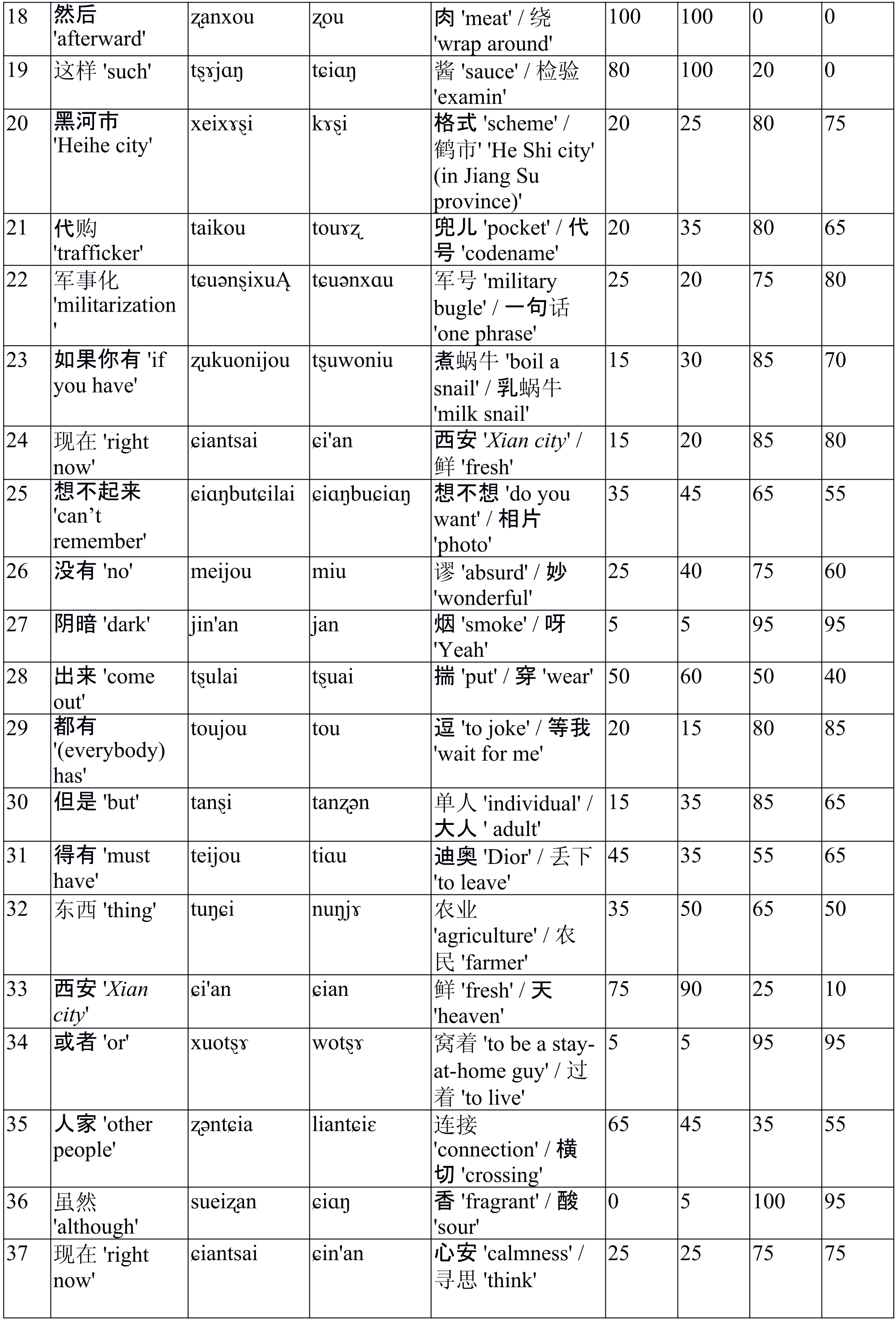
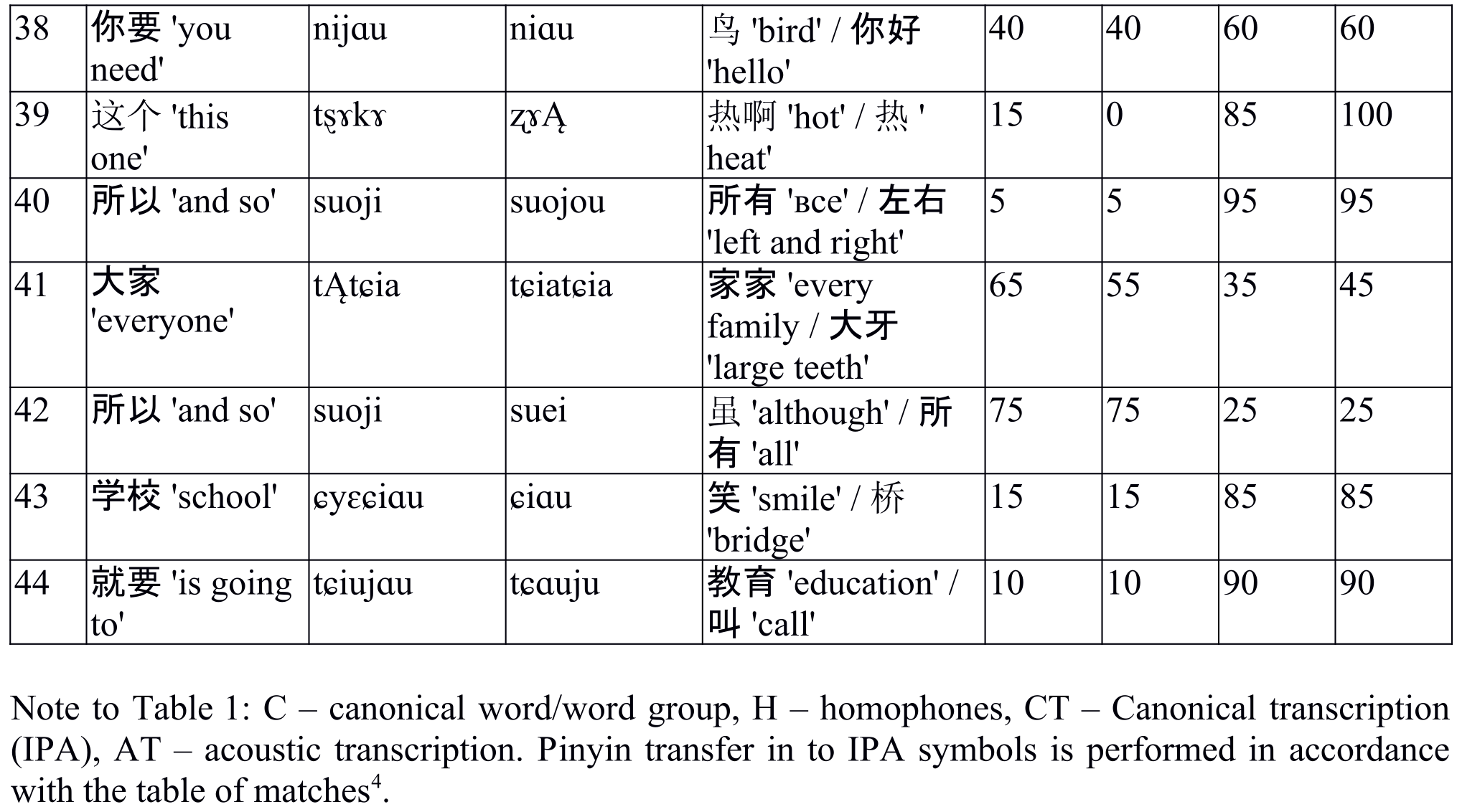
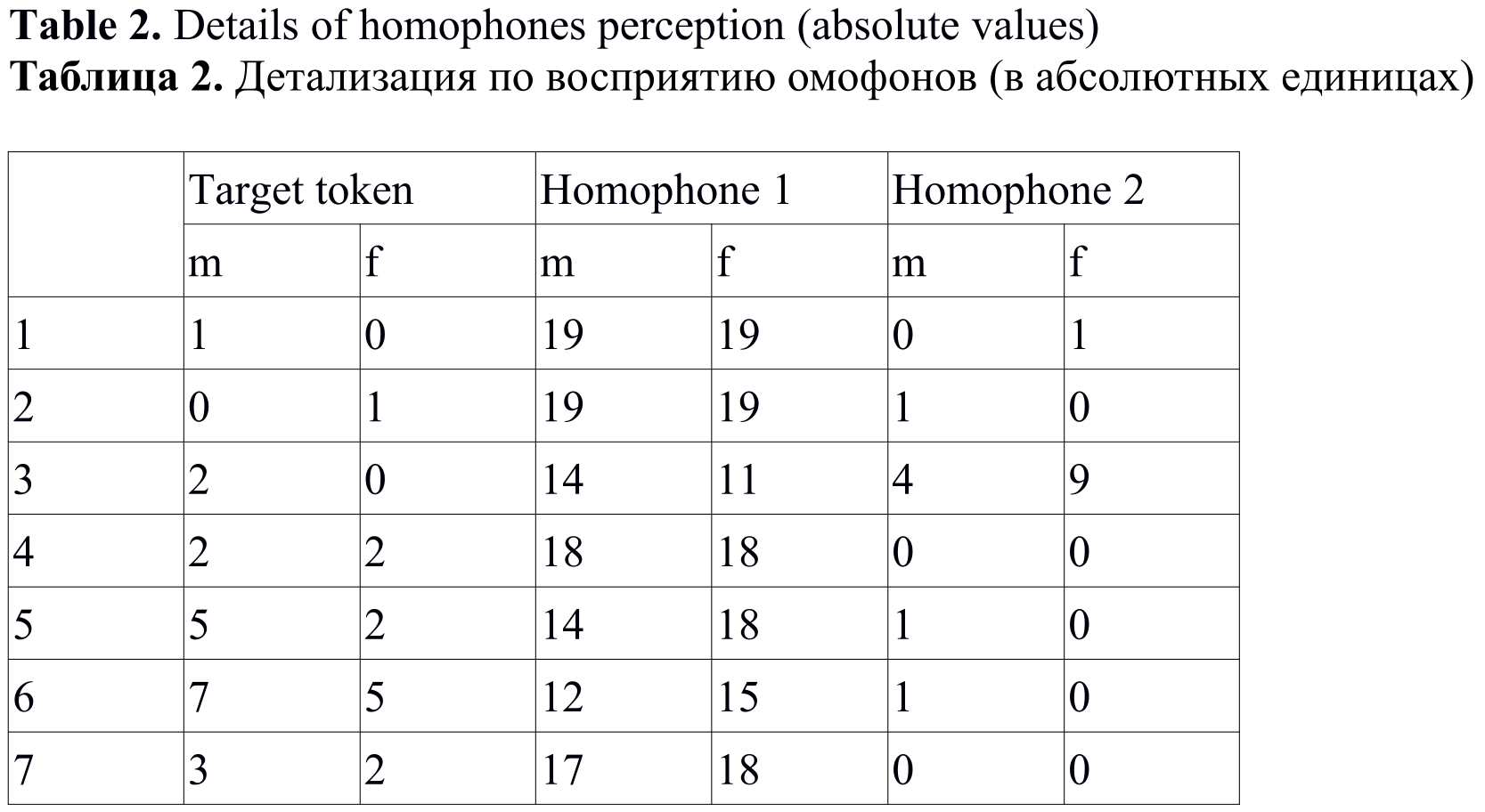
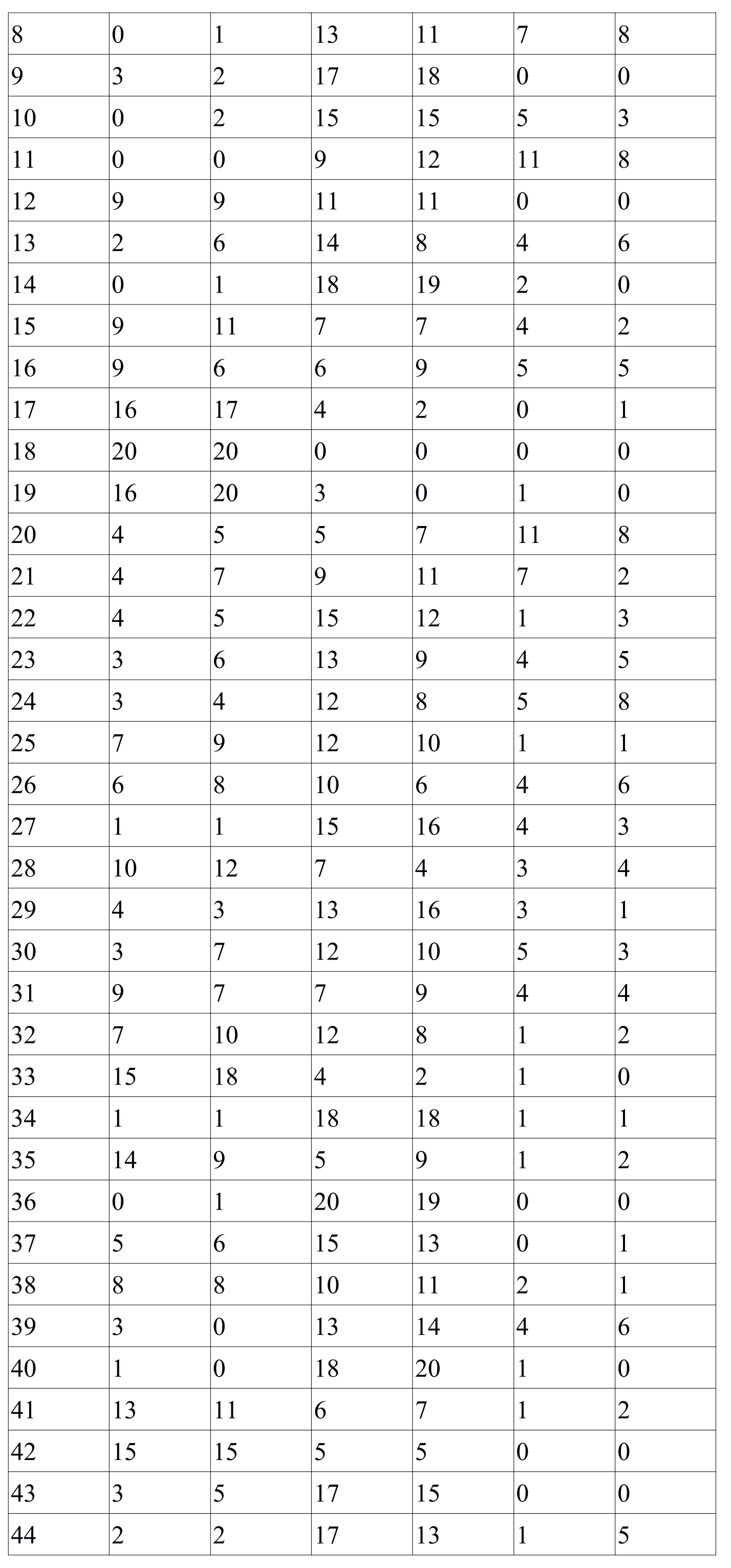


Li, Y. and Androsova, S. V. (2023). A perceptual study of weak forms in Chinese: the case of phonetic homophony, Research Result. Theoretical and Applied Linguistics, 9 (4), 47-62. DOI: 10.18413/2313-8912-2023-9-4-0-3


















While nobody left any comments to this publication.
You can be first.
Androsova, S. V. (2015). Nekanonicheskie fonologicheskie modeli morfem i slov v russkom i angliyskom yazykakh [Non-canonical modes of morphemes and words in Russian and English], Teoreticheskaya i prikladnaya lingvistika [Theoretical and Applied Linguistics], 1 (1), 5-15. (In Russian)
Arcodia, G. F. (2007). Chinese: A Language of Compound Words?, in Montermini, F. Boyé, G. and Hathout, N. (eds.), Selected Proceedings of the 5th Décembrettes: Morphology in Toulouse, Somerville, US, 79-90. (In English)
Babushkina, E. S. (2012). K probleme izmeneniya zvukovykh kharakteristik slov kitaiskogo yazyka v potoke rechi [Phonetic pattern changes of Chines words in the speech flow], Molodoi uchenyi [Young scientist], 6 (41), 229-230. (In Russian)
Bondarko, L. V., Verbitskaya, L. A., Gordina, M. V., Zinder, L. R. and Kasevich, V. B. (1974). Stili proiznosheniya i tipy proizneseniya [Pronunciation styles and types], Voprosy yazykoznaniya [Topics in the Study of Language], 2, 64-70. (In Russian)
Borisova, E. G. (2018). Upravlenie ponimaniem. Yazykovye edinitsy, reguliruyushchie ponimanie soobshcheniya [Understanding Management: Language Units as Indicators of Message Comprehension], Vestnik Mosk. un-ta. Ser. 9: Filologiya [Moscow University Bulletin, Ser. 9: Philology], 6, 34–50. (In Russian)
Burchfield, L. A. and Bradlow, A. R. (2014). Syllabic reduction in Mandarin and English speech, JASA, 135 (6). http://dx.doi.org/10.1121/1.4874357(In English)
Cao, J. (曹剑芬). (1992). On neutral-tone syllables in Mandarin Chinese, Canadian Acoustics, 3, 49-50. (In English)
Cangemi, F. and Baumann, S. (2020). Integrating phonetics and phonology in the study of linguistic prominence, Journal of Phonetics, 81, 1–7. https://doi.org/10.1016/j.wocn.2020.100993(In English)
Cheng, C. and Xu, Y. (2009). Extreme reductions: Contraction of disyllables into monosyllables in Taiwan Mandarin, Proceedings of Interspeech, ISCA, Brighton, UK, 456-459. (In English)
Cruttenden, A. (2001). Gimson's pronunciation of English, Edward Arnold Limited, China. (In English)
Fu, X. and Li, L. (2018). Hebei jiaotong zhiye jishu xueyuan (2018 nian 6 yue). yuying ganzhi shiyan jishu de xintansuo [New exploration of speech recognition technology], Journal of Shijiazhuang Institute of Railway Technology, 2, 115-117. (In Chinese)
Gu, Z., Mori, H. and Kasuya, H. (2003). Analysis of vowel formant frequency variations between focus and neutral speech in Mandarin Chinese, Acoustic Science and Technology, 24 (4), 192-193. (In English)
Huff, Ch. L. (2017). A study of Mandarin homophony, Ph.D. Thesis, Hertford College, Oxford, UK. (In English)
Jones, D. (1969). An Outline of English Phonetics, 9th edn. (1st edn. 1918), Heffer, Cambridge, UK. (In English)
Karavaeva, V. G. (2018). Pertseptivnye kharakteristiki intervokal'nykh soglasnykh realizatsii na meste orfograficheskikh -t-, -tt- (na materiale britanskogo novostnogo analiticheskogo diskursa) [Perceptual features of intervocalic consonant realizations used for -t-, -tt- (Based on British news analytic discourse)], Vestnik Sankt-Peterburgskogo universiteta. Yazyk i literatura [Vestnik of Saint Petersburg University. Language and Literature], 15 (3), 424-437. https://doi.org/10.21638/spbu09.2018.308(In Russian)
Kasevich, V. B. (2006). Fonologicheskie problemy obshchego i vostochnogo yazykoznaniya [Phonological issues of general linguistics and Asian linguistic studies], Trudy po yazykoznaniyu [Essays in the study of language], Philological Faculty of St Petersburg University Press, St. Petersburg, Russia, 10-238. (In Russian)
Laver, J. (1994). Principles of Phonetics, Cambridge University Press, Cambridge, UK. (In English)
Li, Y. (2022). Slabye formy slogov v spontannoy rechi zhenshchin (eksperimentalno-foneticheskoe issledovanie na materiale kitayskogo yazyka) [Weak forms of syllables in female spontaneous speech (Experimental phonetic study based on Chinese)], Ph.D. Thesis, Amur State University, Blagoveshchensk, Russia. (In Russian)
Li, Y. and Androsova, S. V. (2019). Foneticheskie osobennosti slov v ikh obychnykh funktsiyakh i v kachestve slov-parazitov (na materiale kitaiskogo yazyka) [Phonetic patterns of words in their ordinary functions and as parasite words (Based on Chinese)], Teoreticheskaya i prikladnaya lingvistika [Theoretical and Applied Linguistics], 5 (3), 99–116. https://doi.org/10.22250/2410-7190_2019_5_3_99_116(In Russian)
Li, Y. and Androsova, S. V. (2022). Slabye formy kitayskikh slogov i ikh kombinatsiy: akusticheskiy aspekt [Weak forms of Chinese syllables and their combinations], in Fayzieva, G. V. (ed.), Diskursivnye praktiki: zhanrovye i foneticheskie aspekty [Discursive practices: Genre and phonetic issues], PIEF Press, Perm, Russia. (In Russian)
Lobacheva, M.V. and Androsova, S. V. (2016). K probleme statusa i modifikatsii vnutrennei struktury sloga v slogovykh yazykakh (na materiale kitaiskogo yazyka) [On the status and modifications of the internal syllable structure in syllabic languages (Based on Mandarin Chinese)], Teoreticheskaya i prikladnaya lingvistika [Theoretical and Applied Linguistics], 2 (4), 23-40. (In Russian)
Meng, Z., Chen, Y. and Li, X. (2006). Statistical Survey of Monophthong Formants in Mandarin for Students Being Trained as Broadcasters, Proceedings of the 20th Pacific Asia Conference on Language, Information and Computation, Tsinghua University Press, Huazhong Normal University, Wuhan, China. 280-286. (In English)
Mücke, D., Hermes, A. and Cho, T. (2017). Mechanisms of regulation in speech: Linguistic structure and physical control system, Journal of Phonetics, 64, 1-7. http://dx.doi.org/10.1016/j.wocn.2017.05.005 (In English)
Port, R. (2007). How are words stored in memory? Beyond phones and phonemes, New Ideas in Psychology, 25, 143-170. (In English)
Priva, U. C. and Strand, E. (2023). Schwa’s duration and acoustic position in American English, Journal of Phonetics, 96, 1–16. https://doi.org/10.1016/j.wocn.2022.101198(In English)
Rao, D. and Shaw, J. A. (2021). The role of gestural timing in non-coronal fricative mergers in Southwestern Mandarin: Acoustic evidence from a dialect island, Journal of Phonetics, 89. https://doi.org/10.1016/j.wocn.2021.101112(In English)
Shcherba, L. V. (1957). O raznykh stilyakh proiznosheniya i ob ideal'nom foneticheskom sostave slov [Different styles of pronunciation and canonical phonemic models of words], in Shcherba, L. V. (ed.), Izbrannye raboty po russkomu yazyku [Selected works in the Russian language], Uchpedgiz Press, Moscow, Russia, 21-25. (In Russian)
Shen, I. (2018). Ieroglif «chinarei» i kitaiskii ieroglif [The Traditional Chinese Hieroglyph and the Hieroglyph of the Chinari Literary Group], Vestnik Mosk. un-ta. Ser. 9: Filologiya [Moscow University Bulletin, Series. 9: Philology], 6, 131-140. (In Russian)
Xiao, R., Rayson, P. and McEnery, T. (2009). A Frequency Dictionary of Mandarin Chinese: Core Vocabulary for Learners, Routledge, London, UK. (In Chinese and English)
Wang, Z. N., Chen, Y., NG, M. L., Yao, L. and Zhang, W. (2020). Acoustic analysis of Mandarin Chinese vowels produced by young adults, Rehabilitation Medicine, 30 (3), 183-191. https://doi.org/10.3724/SP.J.1329.2020.03004 (In English)
Zinder, L. R. (1981). Realnyi potok rechi i «rekonstruktsiya» fonemnogo sostava slov [Speech flow and word phonemic pattern reconstruction], in Avanesov, R. I., Bondarko, L. V. and Zinder, L. R. (eds.), Teoriya yazyka. Metody ego issledovaniya i prepodavaniya: k 100-letiyu so dnya rozhdeniya Lva Vladimirovicha Shcherby [Language theory. Methods of language study and teaching: A commemorative volume in honor of L. V. Scherba], Nauka Press, Leningrad, Russia, 102-106. (In Russian)
We express our gratitude to Amur State University and Laboratory of Experimental Phonetic Research for providing technical support for this research.